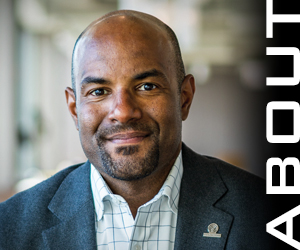CEO Outlook | Winter 2024
5 Areas to Watch in the Accounting Profession
As we look to 2025, it’s important to take note of the trends poised to drive change in the accounting profession.

Geoffrey Brown, CAE
President and CEO, Illinois CPA Society
Insights From Your President and CEO
Change in the accounting and finance ecosystem is nothing new—the issues on the horizon often feel similar, but different, from year to year. The issues feel similar because, frankly, many of them aren’t new. On the other hand, every issue is different because the environment we’re living and operating in continues to shift. In 2025, I fully believe accounting and finance leaders need to focus more on being prepared to handle the challenges—and harness the opportunities—that are steering the profession. Here are five areas I believe will impact the profession most in the year ahead.
- AI and Generative AI Adoption: Artificial intelligence (AI) is already a part of many accounting workplaces and will continue to shape the profession for years to come as it becomes more integrated into the technology tools we use. I believe AI will increasingly be viewed as a partner that enhances capacity and effectiveness, providing new insights and creating efficiencies for firms and finance teams alike. In the year ahead, AI will likely continue transforming the work of accounting and finance professionals. While this transformation is occurring, it’s also important to recognize AI’s limitations and implement the right safeguards to ensure responsible usage. AI’s capabilities should be a complement to, not a replacement for, the human capital we have. In my view, AI should be looked to as a means to extend the reach and impact of the specialized skills certified public accountants (CPAs) and other accounting and finance professionals have as strategic business advisors.
- Human Capital and Workforce Development: The profession has received the National Pipeline Advisory Group’s report, along with recommendations from other stakeholders, on how to address the profession’s workforce issues and talent shortage. While this report focuses on the important work needed to raise awareness of accounting as a rewarding and impactful career field, the path ahead is still challenging. The truth is awareness of what a career in accounting can look like is low among young people, and among those familiar with it, many still perceive the alternatives as more relevant and impactful. Those of us in the profession can help change that perception by telling a more compelling story about what it means to the clients, companies, and communities we serve. In turn, we may be able to inspire more young people to major in accounting and rebuild a robust pipeline of future CPAs.
- AICPA and NASBA Leadership Transitions: The entire profession should be watching to see the impact of new leadership at both the Association of International Certified Professional Accountants (AICPA) and National Association of State Boards of Accountancy (NASBA). Mark Koziel, CPA, CGMA, at the AICPA, and Daniel J. Dustin, CPA, at NASBA, are both taking over for long-tenured leaders. While both have established records in other roles within the profession, we need to understand how they’ll leverage their resources to steward the profession into its next iteration. Leadership changes of this nature have the potential to significantly impact the profession’s trajectory in a compelling way. Will they be caretakers or changemakers? How will they confront the profession’s most pressing challenges and harness the opportunities? Only time will tell.
- Evolving CPA Licensure Models: The current pathway to CPA licensure, including the 150-credit-hour requirement, has long been the standard. However, that standard is now increasingly viewed as a barrier to entry into the profession for many, and new pathways need to be adopted. There’s a nationwide push to codify alternative pathways to CPA licensure that would require a bachelor’s or master’s degree with an accounting concentration, passage of the CPA exam, and one or two years of experience, respectively. These pathway proposals are designed to address prospective CPAs’ concerns about the time and cost of education for licensure, while still maintaining the necessary rigor to protect the public. While adding pathways to licensure won’t likely alleviate short-term talent issues, the profession needs to continue acting on the insights gleaned from the many pipeline and talent retention studies that have taken place in recent years (e.g., see our Insight Special Features, “Righting Retention” and “Re-Decoding the Decline”). Further, the profession must begin laying the foundation for how it’ll develop the next generation of talent under any new licensure pathways that become adopted.
- Normalization of the Regulatory Regime: During the current administration, the profession faced a barrage of regulatory proposals that surpassed previous levels. Now that the election outcome is certain, 2025 is poised to be a year of regulatory shift. Will the next administration follow with continued intense rulemaking and enforcement? My gut says otherwise. I believe a shift away from increased regulation is more likely, which should be welcomed in the profession, as regulatory intent and impact haven’t always aligned. A pause in new regulation should also provide the time and space needed for everyone to catch up.
As we look ahead to 2025, I think we should brace for a year that may appear quietly calm on the surface but could still be filled with surprises. Ultimately, if we’re going to maximize the accounting profession’s potential in today’s competitive environment, I think we all need to come together, focus on the future, and bring forward initiatives that help the profession grow and stand the test of time.
Related Content:
- Navigating the Cliffs Ahead: As the college-age population shrinks, and baby boomers retire, the accounting profession has some major demographic cliffs to traverse as it seeks the talent it needs.
- We Can Fix the CPA Pipeline: Armed with new insights, I’m confident stakeholders can align on how to restore the talent pipeline and chart a path forward for the next generation of CPAs.